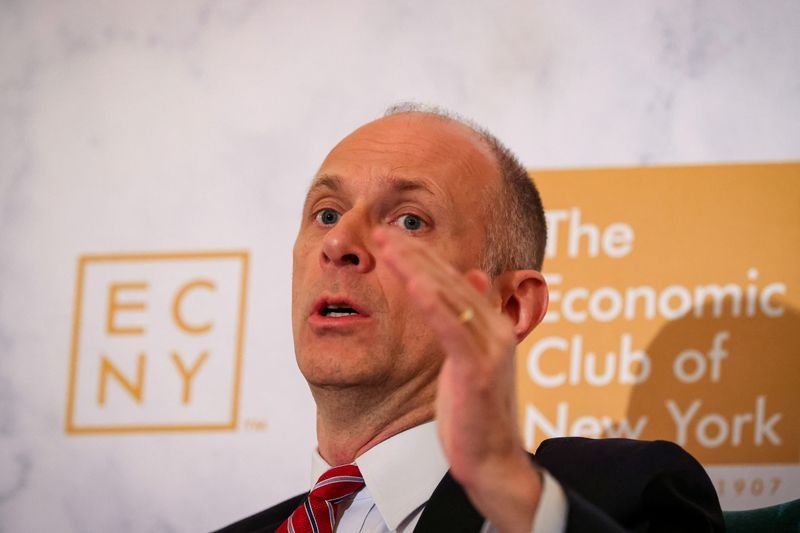Fed’s Goolsbee on Economic Outlook: Patience Needed Amid Economic Anxiety
The Federal Reserve’s focus on the economy has taken center stage, particularly in light of rising concerns about recession. In recent remarks, Austin Goolsbee, President of the Federal Reserve Bank of Chicago, emphasized the importance of exercising patience as we await a more stable economic landscape.
Understanding Economic Anxiety
Goolsbee highlighted that currently, there is a notable sense of anxiety permeating financial markets and among consumers. This uncertainty affects not only spending habits but also business investments, which are critical for economic growth. The Fed is tasked with monitoring these emotional undercurrents, as they can heavily influence economic conditions.
The Importance of Waiting
He stressed that it’s prudent for the Fed to hold off on any significant policy shifts until the landscape shows signs of clarity. Jumping to conclusions or making hasty decisions can lead to unintended consequences. Goolsbee’s perspective serves as a reminder that the economic recovery process is often non-linear and requires careful consideration.
Interest Rates and Inflation Dynamics
One focal point of Goolsbee’s discussion was the interplay between interest rates and inflation. The Fed’s approach to managing inflation involves adjusting interest rates, which in turn affects borrowing costs for consumers and businesses. Goolsbee indicated that any future decisions regarding interest rates will depend on the underlying economic data and the level of anxiety present in the market.
Observing Economic Indicators
Goolsbee advocates for paying close attention to key economic indicators, such as employment rates and consumer spending, as these metrics provide valuable insights into the overall health of the economy. A rebound in these areas could help alleviate some of the existing anxiety and lead to a more favorable outlook. However, as of now, it’s essential to remain cautious.
The Role of Consumer Confidence
Another crucial aspect Goolsbee mentioned is the significance of consumer confidence. Strong consumer sentiment can stimulate spending, which drives economic activity. Conversely, when people feel uncertain about their financial future, they tend to hold back on spending. This cyclical nature underscores the importance of bolstering confidence in the economy as a part of the recovery process.
Potential Long-Term Implications
While the focus remains on the immediate outlook, Goolsbee emphasized that the decisions made by the Federal Reserve today could have lasting consequences for the economy. A careful balance must be struck between fostering growth and controlling inflation, and this often requires patience and strategic thinking.
Building a Sustainable Recovery
Ultimately, Goolsbee’s remarks underline the necessity for a careful, methodical approach to economic policy. While it’s tempting to want quick fixes to stimulate growth, the focus should be on developing a sustainable recovery. As the Fed moves forward, the emphasis will be on creating an environment where small businesses can thrive, consumers can spend confidently, and inflation is kept in check.
Final Considerations from Goolsbee
In conclusion, Goolsbee’s message is clear: the Federal Reserve must remain vigilant and patient while navigating through these turbulent economic times. The current atmosphere of anxiety necessitates a measured approach to policy-making. By focusing on solid economic fundamentals and waiting for signs of stabilization, the Fed aims to ensure a robust and enduring recovery for all sectors of the economy.
As we move forward, stakeholders across various sectors will be closely monitoring the Fed’s actions and the economic indicators that shape these decisions. The hope is that with patience and strategic planning, the path to a healthier economy will become clearer.
